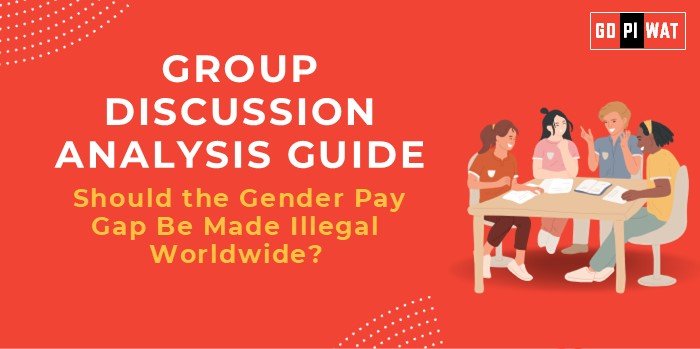📋 Should the Gender Pay Gap Be Made Illegal Worldwide?
🌐 Introduction to the Topic
Context Setting: “Despite decades of advocacy for gender equality, the gender pay gap persists globally, with women earning, on average, 77 cents for every dollar earned by men.”
Topic Background: Originating in systemic discrimination and socio-economic biases, the gender pay gap reflects inequities in access to education, career advancement, and societal norms. While some nations enforce equal pay legislation, global disparities remain stark.
📊 Quick Facts and Key Statistics
- 🌍 Global Pay Gap: Women earn 23% less than men globally (ILO, 2023).
- 💼 Sectoral Disparity: Female-dominated sectors pay 30% less than male-dominated ones (OECD, 2023).
- 🌏 Regional Inequalities: The pay gap is widest in South Asia (30%) and narrowest in Nordic countries (4%) (World Bank, 2023).
- 📈 Economic Impact: Closing the gap could add $12 trillion to global GDP by 2030 (McKinsey, 2023).
- 📜 Legislative Measures: Over 90 countries lack gender pay gap legislation (UN Women, 2023).
🏗️ Stakeholders and Their Roles
- 🏛️ Governments: Enact and enforce equal pay laws; monitor compliance.
- 🏢 Corporations: Commit to transparent salary practices; implement pay equity audits.
- 🌍 NGOs and Advocacy Groups: Raise awareness and support underrepresented groups.
- 👩💼 Employees: Demand fair pay; participate in collective bargaining.
- 📚 Academia: Research the causes and effects of pay disparities; recommend policy changes.
🏆 Achievements and Challenges
🎉 Achievements:
- 🇮🇸 Iceland’s Equal Pay Certification: Mandates companies to prove pay equity, reducing the gap to under 5%.
- 🇪🇺 EU’s Pay Transparency Directive: Promotes salary audits and transparency.
- 🏢 Corporate Initiatives: Companies like Salesforce have invested millions to address pay inequities.
⚠️ Challenges:
- 🌍 Lack of Global Enforcement: Many countries lack legislative frameworks for pay equity.
- 💡 Cultural and Social Norms: Biases against women in leadership roles persist globally.
- 💰 Economic Disparities: Pay gaps are exacerbated in developing economies with limited resources.
🌍 Global Comparisons:
- 🇳🇴 Norway: Enforces equal pay audits with significant compliance, showcasing progress in narrowing the pay gap.
- 🇮🇳 India: Laws like the Equal Remuneration Act exist but face challenges in enforcement and cultural acceptance.
💡 Structured Arguments for Discussion
Supporting Stance: “Making the gender pay gap illegal worldwide is essential for achieving economic and social equity.”
Opposing Stance: “Enforcing such laws globally may not address root causes like education and cultural biases.”
Balanced Perspective: “While legislation is vital, addressing systemic issues like education and opportunity gaps is equally important.”
🗣️ Effective Discussion Approaches
Opening Approaches:
- 📊 Data-Driven: “With a potential $12 trillion boost to global GDP, closing the pay gap isn’t just moral—it’s economic sense.”
- ⚖️ Contrast: “Iceland boasts near-zero pay gaps, while South Asia faces a 30% disparity—what can we learn?”
Counter-Argument Handling:
- ✔️ Highlight Success Stories: Use examples like Iceland’s Equal Pay Certification to show the effectiveness of enforced measures.
- 📈 Propose Phased Strategies: Suggest gradual implementation to ensure adaptability and scalability.
⚙️ Strategic Analysis of Strengths and Weaknesses
- ✅ Strengths: Promotes equality, boosts economic growth, and encourages female workforce participation.
- ❌ Weaknesses: Implementation challenges in resource-poor settings and cultural resistance.
- 📈 Opportunities: Role modeling global policies and leveraging AI for pay equity audits.
- ⚠️ Threats: Resistance from corporations and risks of tokenism without systemic change.
🎓 Connecting with B-School Applications
Real-World Applications:
Explore topics in organizational leadership, diversity management, and policy-making. Learn how equitable pay impacts employee satisfaction and corporate sustainability.
Sample Interview Questions:
- 💬 “How would you address pay inequity in a multinational corporation?”
- 📊 “What economic benefits can arise from closing the gender pay gap?”
Insights for Students:
- 📘 Understand the role of inclusive HR policies in fostering equitable workplaces.
- 🌍 Link gender equity with broader business sustainability goals.


